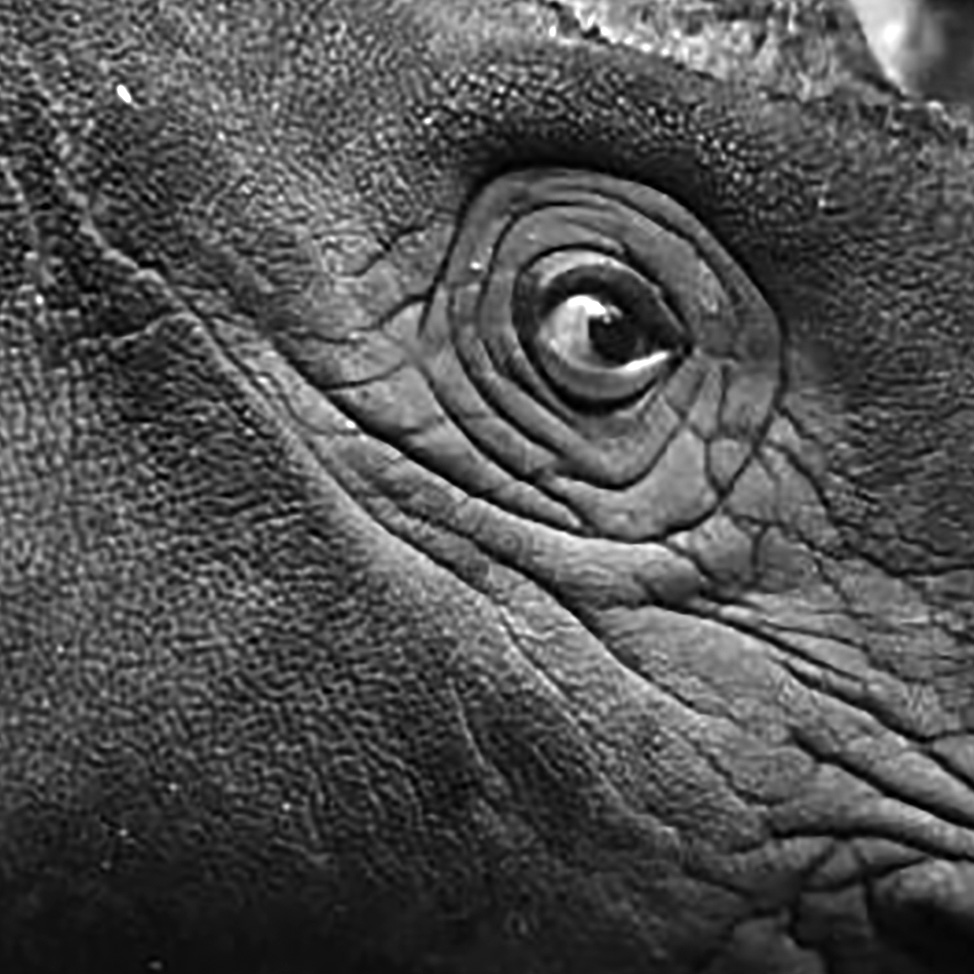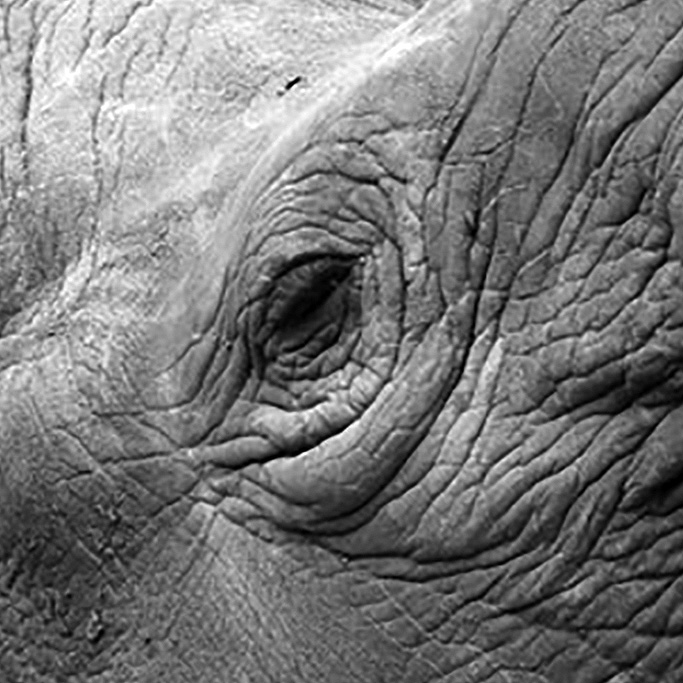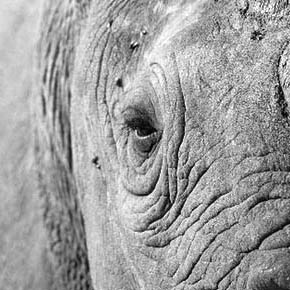Chalk written texts are employed as didactic moments in the exhibit. These cases hold the scientific names of the five extant species of rhinoceros.
Ceratotherium simum
White rhinos are the second largest land mammal. They have a square upper lip, from which is derived their name from the German “weit” (wide). Two sub-species exist in Africa: the northern and southern white rhino. Southern white rhinos were thought extinct in the 19th century, but after a small population was found in Kwazulu-Natal, South Africa, conservation efforts enabled the growth of the population to approximately 20 000 animals in Southern Africa. The last northen white rhino, Sudan, died in 2018 in the Ol Pejeta Conservancy, Kenya. His two female descendants Najin and Fatu still survive in 2021.
Diceros bicornis
Black rhinos are the smaller of the two African rhino species and have a hooked upper lip and two horns. The population dropped in 1995 to less than 2500. They now number over 5000, but remains critically endangered.
Rhinoceros sondaicus
Javan rhinos are the most threatened of the rhino species. They have a single horn and loose grey skin, similar to the Indian rhinoceros. Approximately only 60 still live in Java, Indonesia. Vietnam’s last Javan rhino was poached in 2010.
Rhinoceros unicornis
The Indian rhino is the largest of the rhino species. By the start of the 20th century, only 200 individuals remained in the wild. Today in India and Nepal populations have increased to around 3700. It has a single horn and skin folds that resemble armour.
Dicerorhinus sumatrenis
Sumatran rhinos are the smallest of the living rhinoceroses, are covered with long hair and have two horns. They are highly endangered and only found in Sumatra and Borneo where its natural habitat has been radically diminished. Malaysia’s last male Sumatran rhino died in 2019.




